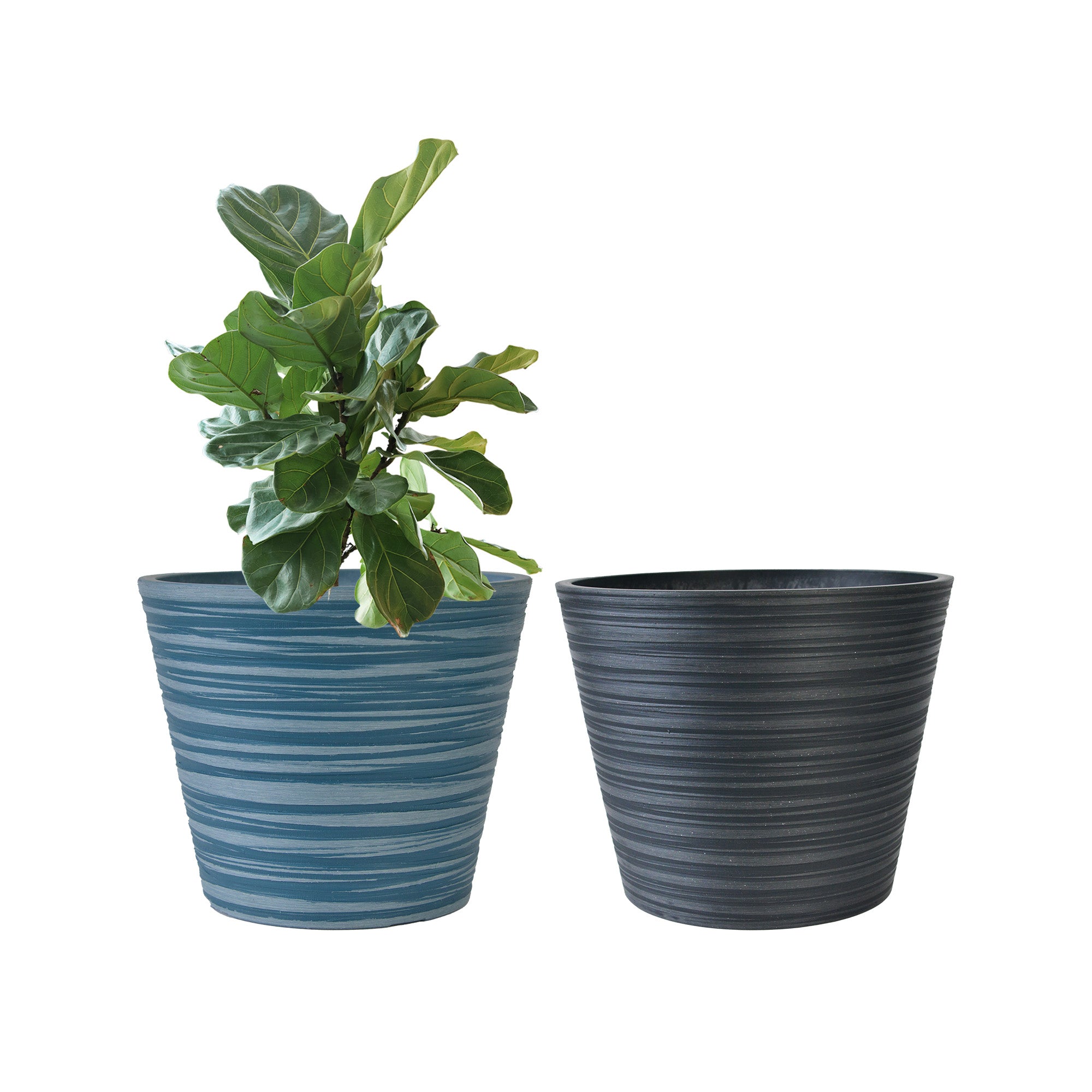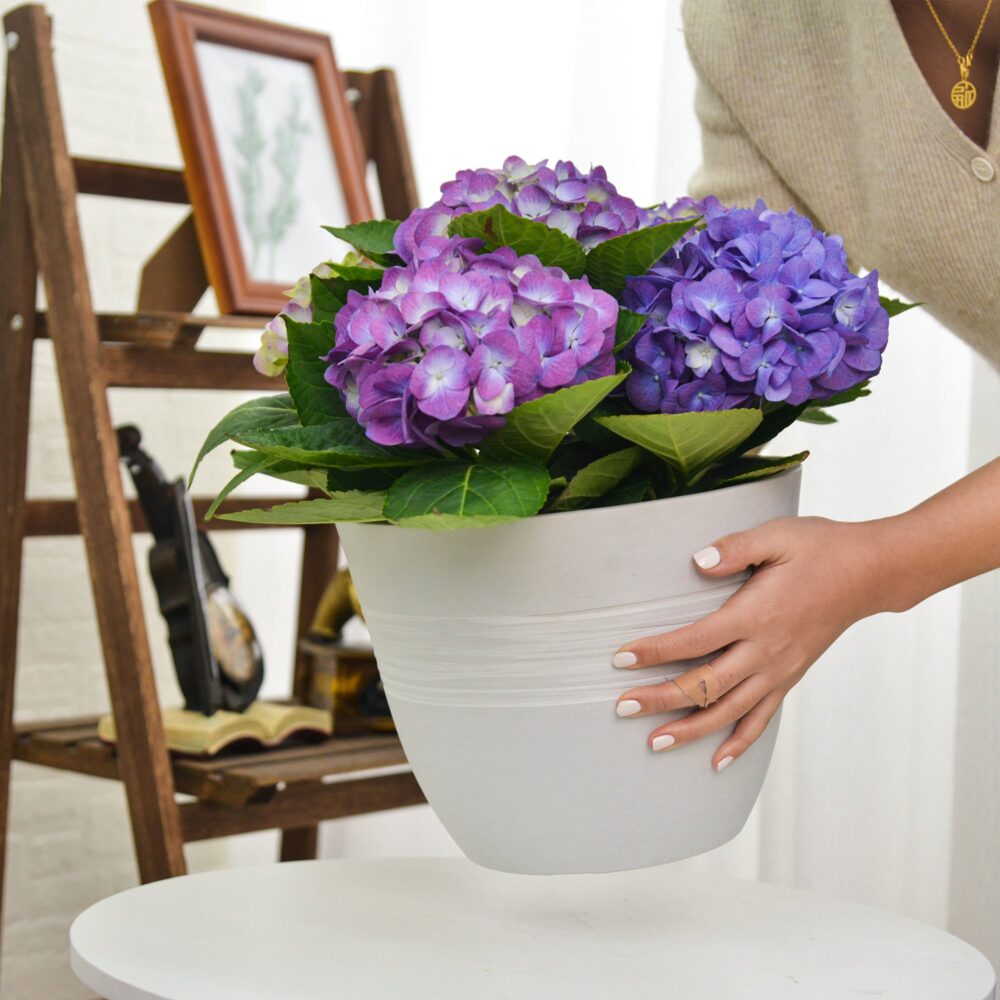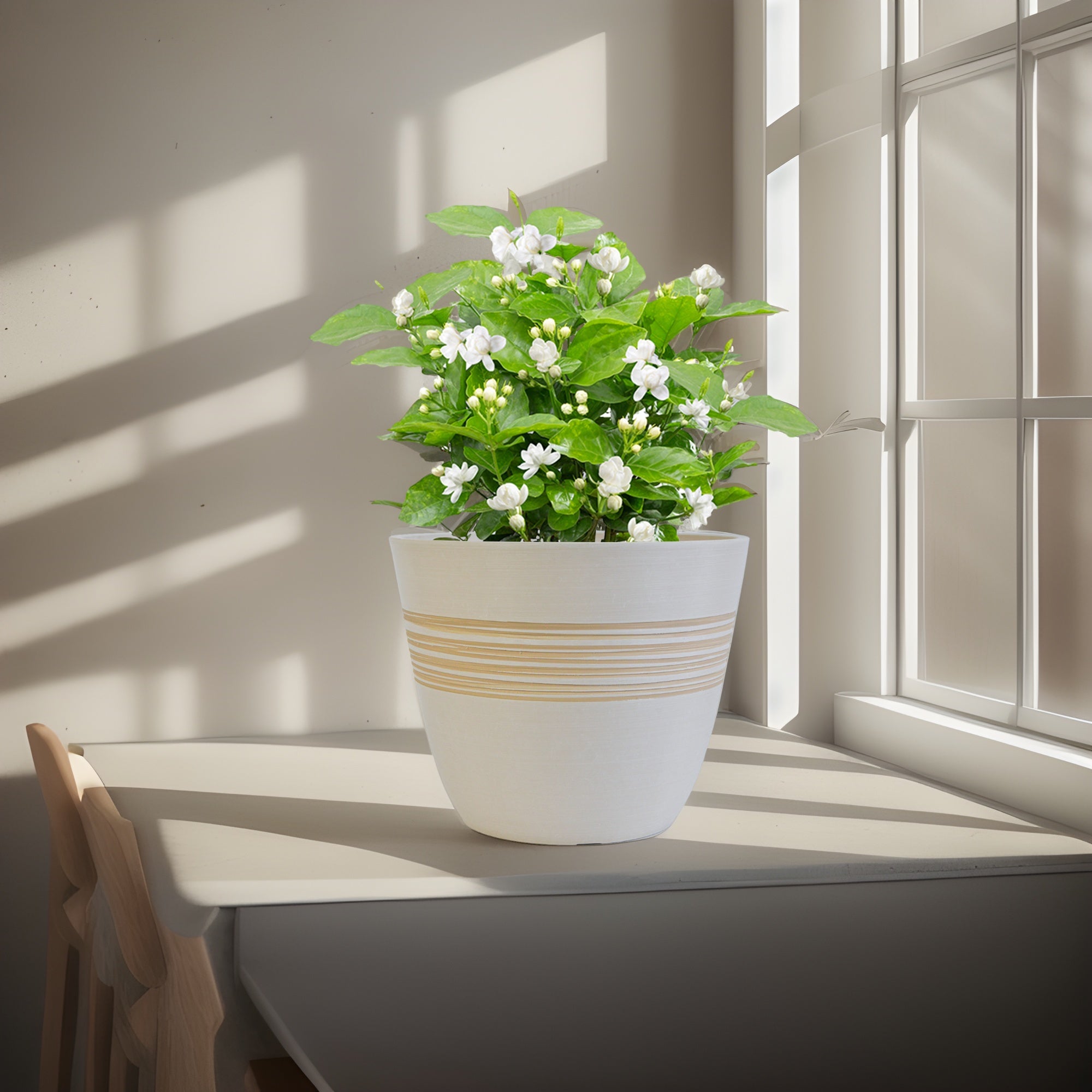6.Do you need special soil for self watering planters?
While you don’t strictly need “special” soil in the sense of a completely unique product category labeled “self-watering planter soil,” using the right type of potting mix is highly recommended to get the best performance and prevent problems in self-watering planters.
Why the Right Soil Mix Matters in Self-Watering Planters:
The success of self-watering planters relies on capillary action – the soil’s ability to draw water upwards from the reservoir to the roots.1 Therefore, the soil mix needs to have specific characteristics to work effectively in this system.
Key Characteristics of Good Soil for Self-Watering Planters:
- Well-Draining: This is crucial to prevent the soil from becoming waterlogged, even with the reservoir system.2Good drainage ensures that excess water can move away from the roots and into the reservoir, and that air can reach the roots.3
- Good Wicking Ability (Retains Moisture): The mix needs to be able to effectively draw water upwards from the reservoir and distribute it evenly throughout the pot. It should retain enough moisture to keep the plants hydrated between reservoir refills, but not stay soggy.
- Sufficient Aeration: Even though it’s self-watering, the roots still need oxygen.4 A good mix will provide adequate pore space for air to circulate around the roots.
- Slightly Lightweight and Porous: This helps with both drainage and wicking. Heavy, dense soils can compact and hinder both processes.

Recommended Soil Components and Mixes for Self-Watering Planters:
- Potting Mix (Soilless Mix): This is the base of most good mixes. Choose a high-quality, peat-based or coco coir-based potting mix that is designed for containers. Avoid using garden soil or topsoil, as these are too dense and don’t drain well in pots.6
- Perlite or Vermiculite: These are lightweight, porous materials that improve drainage and aeration.7 Perlite is generally preferred for self-watering planters as it retains less water than vermiculite and promotes better drainage. Vermiculite can be used in moderation, especially if you are growing plants that prefer slightly more moisture.8
- Coarse Sand or Bark Fines: Adding a small amount of coarse sand (horticultural sand, not play sand) or bark fines (like orchid bark or pine bark fines, finely shredded) can further improve drainage and aeration, especially in mixes that might be too moisture-retentive.
- Coco Coir: Coco coir is a sustainable alternative to peat moss.9 It has good water retention and aeration properties and can be used as a base for your mix or in combination with peat moss.
- Slow-Release Fertilizer (Optional): You can incorporate a slow-release fertilizer into your mix at planting time to provide a gradual release of nutrients over time. However, be mindful of fertilizer buildup over time in self-watering systems.
Example Soil Mix Recipes for Self-Watering Planters:
Basic Well-Draining Mix:
- 60% High-quality Potting Mix (peat or coco coir based)
- 30% Perlite
- 10% Coarse Sand or Bark Fines (optional)
Airy Mix for Plants Sensitive to Overwatering (like Hoyas, some succulents):
- 40% Orchid Bark Mix (fine to medium grade)
- 30% Perlite
- 30% Coco Coir or Potting Mix
General Purpose Mix:
- 50% High-quality Potting Mix
- 30% Perlite
- 20% Coco Coir or Vermiculite (adjust ratio based on plant water needs)
Soils to Avoid in Self-Watering Planters:
- Garden Soil or Topsoil: Too dense, compacts easily, poor drainage, can become waterlogged quickly in containers, and may contain weed seeds and diseases.
- Heavy Clay Soils: Extremely poor drainage, retains too much water, will likely lead to root rot in self-watering planters.
- Very Fine Sand (like play sand or beach sand): Can compact and reduce drainage over time.10 Use coarse horticultural sand if using sand.
- Mixes That are Too Moisture-Retentive: Avoid mixes that are very high in water-retaining components like vermiculite without sufficient drainage amendments (perlite, bark).

In summary, while there’s no single “special” soil just for self-watering planters, you should definitely use a well-draining potting mix that is amended with perlite and potentially other drainage-improving materials like coarse sand or bark fines. Avoid heavy garden soil or mixes that are too dense and moisture-retentive. The goal is to create a soil that wicks water effectively but also drains well and provides good aeration for healthy root growth in the self-watering environment.
To verify this information, I used Google Search and found these helpful resources:
WaterWise Gardening – Self-Watering Containers: Soil Mixes: This article from Texas A&M AgriLife Extension specifically discusses soil mixes for self-watering containers, recommending peat-based or peat-vermiculite mixes and advising against garden soil. It emphasizes the importance of a lightweight, porous media.
Gardening Know How – Choosing Soil For Self-Watering Pots: What Soil To Use In Self-Watering Planters:This article from Gardening Know How also recommends using a soilless potting mix for self-watering planters and suggests amending it with perlite, vermiculite, and compost. It also advises against using garden soil or heavy soils.
Epic Gardening – Self-Watering Planters: Do They Actually Work?: While mainly about the functionality of self-watering planters, this article from Epic Gardening also implicitly reinforces the need for well-draining soil by mentioning the importance of aeration and avoiding waterlogged conditions, which is directly related to soil choice.
Planter 6 in W / 8 in W / 12 in W Indoor or Outdoor Plants, Modern Decorative Plant Pots with Drainage Hole, Decorative Flower Pots
By greenship-seo|2025-02-06T13:43:53+00:00January 16, 2025|Categories: Hand-carving Series|Tags: Decorative Flower Pots|
Planter 5 in W / 8 in W / 12 in W or Indoor Outdoor Plants, Modern Decorative Plant Pots with Drainage Hole, Decorative Flower Pots
By greenship-seo|2025-04-10T06:37:58+00:00January 16, 2025|Categories: Hand-carving Series|Tags: Decorative Flower Pots|
HS
By greenship|2024-08-13T06:45:17+00:00August 13, 2024|Categories: Hand-carving Series|
Planter for Indoor Outdoor Plants, Set of 2 Modern Decorative Plant Pots with Drainage Hole, Decorative Flower Pots
By greenship-seo|2025-01-14T12:26:44+00:00January 14, 2025|Categories: Hand-carving Series|Tags: Decorative Flower Pots|
20VD
By greenship|2024-08-13T06:43:41+00:00August 13, 2024|Categories: Hand-carving Series|
Planter for Indoor Outdoor Plants, Set of 2 Modern Decorative Plant Pots with Drainage Hole, Decorative Flower Pots
By greenship-seo|2025-04-10T07:46:01+00:00January 9, 2025|Categories: Hand-carving Series|Tags: Decorative Flower Pots, Self-Watering Pots|






